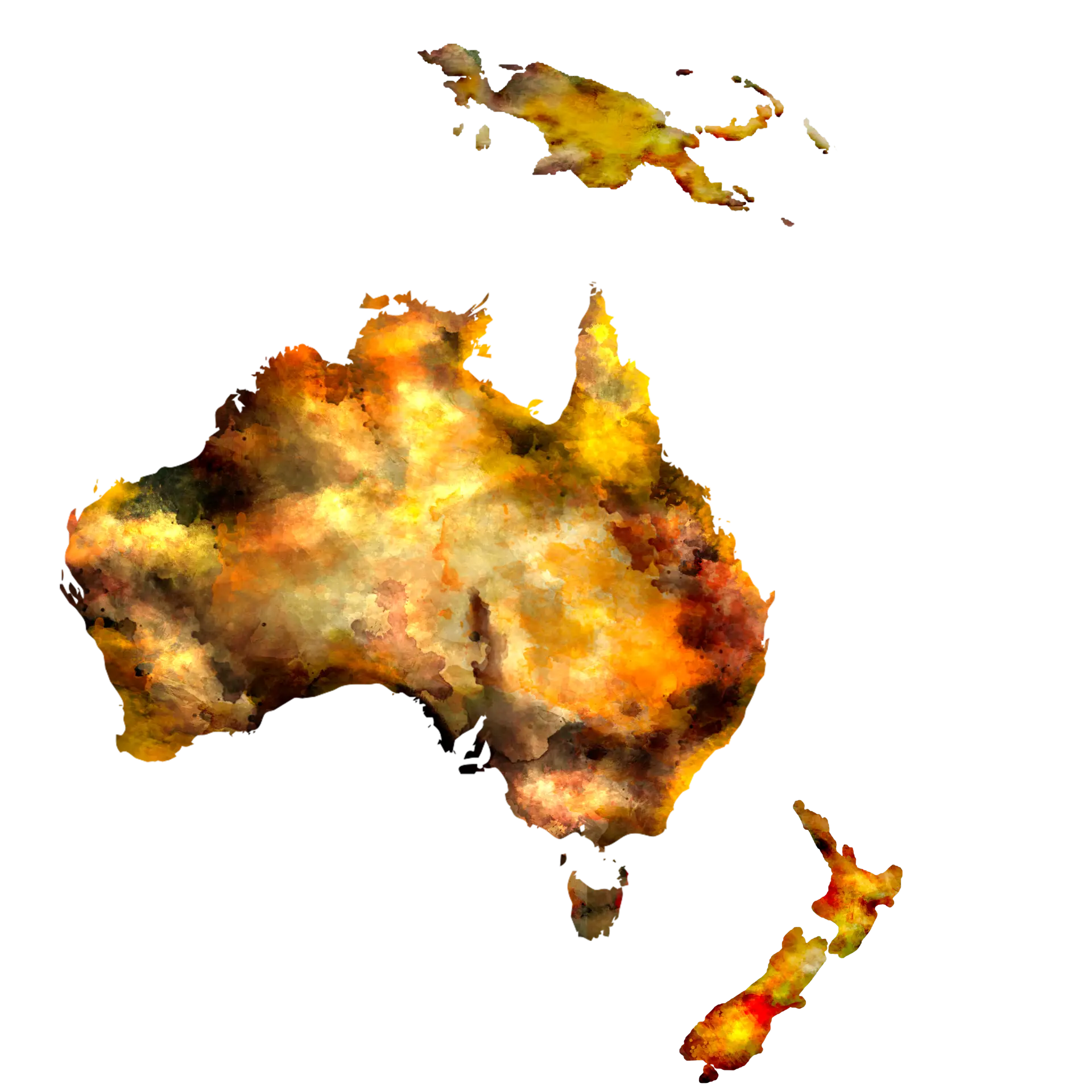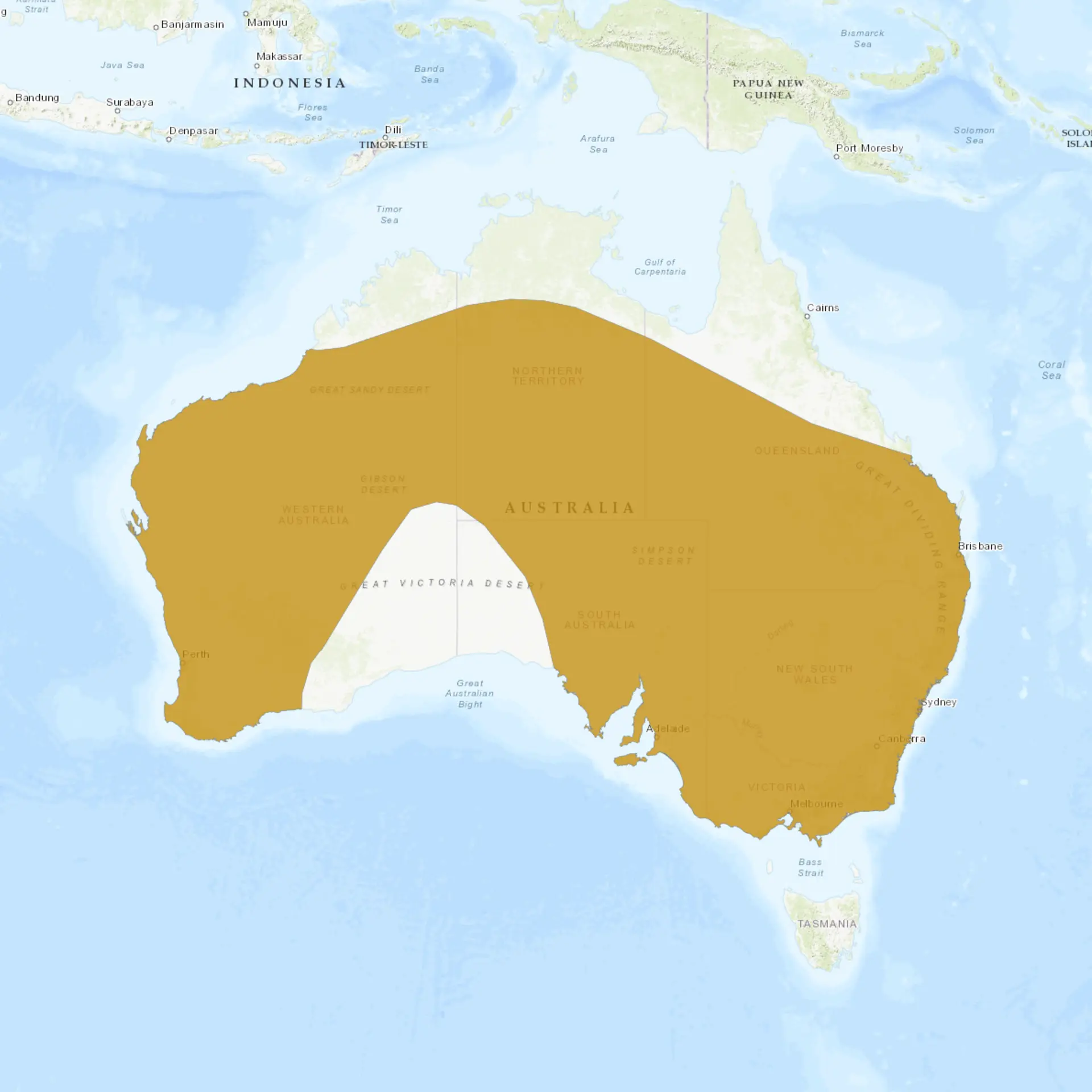Overview
The freckled duck (Stictonetta naevosa) is a unique waterfowl species endemic to Australia, known for its distinctive speckled plumage and relatively upright posture. It is often mistaken for other ducks due to its size and shape, but its large, broad bill and finely mottled feather patterns set it apart. Preferring to secluded wetlands, they are typically found in slow-moving or still freshwater habitats, feeding on aquatic vegetation and invertebrates. Though generally quiet, it produces soft, low vocalizations during the breeding season and when disturbed.
This species is considered one of Australia’s rarest waterfowl, with populations fluctuating due to habitat conditions and water availability. It is non-migratory but may travel large distances in response to droughts or seasonal changes in water levels. Unlike many duck species, the freckled duck does not display strong sexual dimorphism, making it difficult to distinguish males from females apart from the breeding season. It is primarily crepuscular, most active at dawn and dusk, and rests during the day in dense vegetation.
Historically, the freckled duck was heavily hunted, leading to declining numbers before protective measures were implemented. It remains vulnerable to habitat loss caused by wetland drainage, altered water flows, and climate variability. Conservation efforts, including wetland restoration and legal protections, have helped stabilize some populations, but long-term survival depends on maintaining healthy freshwater ecosystems. Captive breeding programs in Australian zoos have also educated the public and supported conservation efforts.
Taxonomy
Kingdom
Phylum
Class
Order
Family
Genus
Species
Type
Current distribution:
The freckled duck is endemic to Australia, with populations primarily in the eastern and southern parts of the continent. Depending on water availability, it is most commonly observed in New South Wales, Queensland, Victoria, South Australia, and parts of Western Australia. While it does not undertake long-distance migrations, it will disperse widely in response to droughts, often appearing in areas not normally seen. During favorable conditions, large concentrations have been recorded in the Murray-Darling Basin and Cooper Creek wetlands.
Due to its reliance on freshwater ecosystems, its distribution is closely tied to seasonal rainfall and flooding patterns. Prolonged droughts and habitat degradation have caused localized declines, leading to fluctuations in regional populations. Although sightings have been reported in Tasmania, the species is not considered a permanent resident there. Conservation programs in protected wetlands have helped stabilize numbers, but ongoing threats continue to impact its overall range.
Physical Description:
The freckled duck has a unique, speckled brown-gray plumage that camouflages in wetland environments. Its feathers are finely mottled with dark and light markings, creating a “freckled” effect across its body. The head is relatively large with a slightly peaked crown, and the broad, flat bill is bluish-gray, turning reddish at the base in breeding males. The legs and feet are dark gray, complementing the overall earthy tones of its plumage.
Both males and females have a similar appearance, making them difficult to differentiate visually. It has a compact body with a slightly rounded tail, and in flight, it reveals a rather uniform wing coloration with no distinct markings. The species has a somewhat upright stance on land, which is more pronounced than many other ducks. Its eyes are dark and positioned high on the head, contributing to its alert and cautious demeanor.

Lifespan: Wild: ~10 Years || Captivity: ~18 Years

Weight: Male: 26-40 oz (747-1130 g) Female: 24-35 oz (691-985 g)

Length: Male & Female: 20–22 in (51–56 cm)

Height: Male & Female: 14–18 in (35–45 cm)

Wingspan: Male & Female: 30–32 in (76–81 cm)

Top Speed: Unknown
Characteristic:
Native Habitat:
The freckled duck inhabits freshwater wetlands, including swamps, lakes, and slow-moving rivers, where it prefers areas with dense aquatic vegetation. It thrives in environments with extensive reed beds and emergent plants that provide shelter from predators and human disturbances. Seasonal flooding is crucial in determining habitat suitability, as the species depends on stable water levels for feeding and breeding. During dry periods, it may seek refuge in artificial water bodies or coastal wetlands, demonstrating a degree of adaptability.
Although it can tolerate some habitat disturbances, the loss of wetland areas due to agriculture, urbanization, and water regulation poses a significant threat. It is particularly sensitive to changes in hydrology and requires stable, undisturbed water bodies to maintain its populations. The presence of suitable nesting sites, such as dense vegetation near water, is crucial for breeding success. Conservation efforts aimed at preserving and restoring wetlands are essential for the long-term survival of this species.
Biomes:
WWF Biomes:
Biogeographical Realms:
Continents:
Countries:
Diet:
Diet & Feeding Habits:
The freckled duck is primarily a filter feeder, consuming a diet composed mainly of aquatic vegetation, algae, and small invertebrates. It feeds by dabbling in shallow water or upending to reach submerged plant matter and organisms. Its broad bill is adapted for straining food particles from the water, a technique that allows it to efficiently extract nutrients from its environment. Unlike diving ducks, it rarely submerges completely and forages along the surface and edges of wetlands.
In addition to aquatic plants, it consumes seeds and detritus, contributing to the ecological balance of its habitat by aiding in nutrient cycling. Its feeding habits vary depending on water levels and the seasonal availability of resources. It often forages more actively at dawn and dusk. During droughts or dry seasons, it may venture to alternative water sources, including temporary floodplains and farm dams. Its ability to adjust its diet and feeding locations makes it a resilient species despite environmental challenges.
Mating Behavior:
Mating Description:
The freckled duck follows a monogamous mating system, with pairs forming during the breeding season, which typically coincides with high water levels. Nesting occurs in dense vegetation near water, with the female constructing a well-hidden nest made of reeds and grass. Clutch sizes range from 5 to 12 eggs; incubation lasts about 26–30 days. The female is solely responsible for incubation. After hatching, the young are precocial and leave the nest shortly after birth, though they remain under maternal care for several weeks.
Males do not participate in incubation but may stay nearby to defend the nesting area from potential threats. Breeding success is closely linked to environmental conditions, with prolonged droughts severely affecting reproductive rates. The species exhibits high site fidelity, often returning to the same wetland areas with favorable conditions. If nesting sites become unsuitable, they may delay breeding or relocate in search of better conditions.
Reproduction Season:
Birth Type:
Pregnancy Duration:
Female Name:
Male Name:
Baby Name:
Social Structure Description:
Freckled ducks are loosely social and found in small, staggered groups outside the breeding season. Unlike many other duck species, they are not highly social and do not form large, cohesive flocks except during periods of drought, when they congregate around remaining water sources. Pairs form during the breeding season but do not exhibit strong territorial behavior. They often nest in others when suitable habitat is available. Outside breeding, they are relatively passive and tend to avoid interacting with other waterfowl.
These ducks are typically quiet and defend themselves using their cryptic plumage rather than aggressive behaviors. They do not have a well-defined dominance hierarchy, as they rarely engage in competitive displays or fights. When disturbed, they prefer to remain motionless and rely on camouflage rather than taking flight immediately. Environmental conditions largely dictate their movements, with individuals dispersing unpredictably in response to water availability.
Groups:
Conservation Status:
Population Trend:
Freckled ducks have experienced population declines due to habitat loss, primarily caused by wetland drainage and altered water flow. Their numbers fluctuate based on rainfall patterns, with significant reductions occurring during extended droughts. Although they are still present in many parts of their historical range, local populations have been extirpated in areas where wetlands have been heavily modified. Conservation efforts aim to stabilize their numbers by preserving critical breeding and foraging habitats.
Illegal hunting and accidental shooting remain threats, as the species can be mistaken for more common game ducks. Climate change is also expected to impact their long-term survival, as shifting rainfall patterns alter wetland availability. Captive breeding programs exist but remain limited in scope due to challenges in maintaining their specialized habitat requirements. Continued conservation actions are necessary to ensure the survival of this unique waterfowl species.
Population Threats:
The primary threat to the freckled duck is habitat loss due to wetland drainage, agricultural expansion, and water diversion for irrigation. Many freshwater wetlands they depend on have been degraded or permanently altered, reducing suitable breeding and foraging sites. Prolonged droughts, exacerbated by climate change, have further decreased the availability of stable water sources, forcing populations into smaller, fragmented habitats. In some regions, water regulation projects have significantly disrupted natural flooding cycles, essential for successful breeding.
Illegal hunting and accidental shooting also pose significant risks, as freckled ducks are sometimes mistaken for more common game species. Predation by introduced species, such as foxes and feral cats, can impact nest success, particularly when ducks are forced to nest in less secure locations due to habitat changes. Pollution from agricultural runoff, including pesticides and fertilizers, can degrade wetland ecosystems, reducing food availability and water quality. As climate change continues to alter rainfall patterns and increase the frequency of extreme weather events, the long-term survival of this species remains uncertain without targeted conservation efforts.
Conservation Efforts:
The freckled duck is legally protected in Australia, and hunting bans prevent accidental or intentional shooting. Conservation programs focus on protecting and restoring key wetland habitats, particularly in the Murray-Darling Basin, where many of the largest populations are found. Water management strategies have been implemented to maintain natural flooding cycles and ensure the availability of breeding and foraging areas. Some conservation organizations monitor populations and research to better understand their movements and habitat needs.
Captive breeding programs exist in a limited capacity, primarily in Australian zoos and wildlife parks, to raise awareness and maintain a backup population. Habitat restoration projects, including wetland rehydration and invasive species control, aim to improve conditions for wild populations. Government agencies and environmental groups work together to secure important wetland areas and regulate water usage to prevent further degradation. Climate change mitigation strategies, such as sustainable water management and conservation land designations, are crucial for the species’ long-term survival.
Additional Resources:
Fun Facts
- The freckled duck is considered one of the most evolutionarily distinct waterfowl species.
- It does not quack like typical ducks and is mostly silent.
- Unlike many duck species, it does not dive for food but relies on filter feeding.
- The red swelling on the male’s bill indicates breeding readiness.
- It has been nicknamed the “monkey duck” due to its unusual calls.
- This species has no close relatives among modern ducks.
- Freckled ducks often remain motionless when threatened, relying on camouflage for protection.
- The freckled duck is a protected species in Australia, with strict hunting regulations.
- Freckled ducks can travel long distances in search of suitable wetlands.
- Despite being rare, it sometimes appears in urban water bodies.


















































































